FreeStyle Libre 2 system and FreeStyle Libre 3 system are indicated for use in people with diabetes ages 4 and older.
Medicare and other payor criteria may apply. Abbott provides this information as a courtesy and does not guarantee payment or coverage.
* Fingersticks are required if your glucose alarms and readings do not match symptoms or when you see Check Blood Glucose symbol during the first twelve hours.
† Study was performed with the outside US version of the FreeStyle Libre 14 day system. Data is applicable to the FreeStyle Libre 2 system and FreeStyle Libre 3 system, as feature sets are similar as FreeStyle Libre 14 day system, excluding alarms.
‡ 60-minute warm-up required when starting the sensor.
§ Study was performed with the outside US version of the FreeStyle Libre 2 system. Data is applicable to FreeStyle Libre 3 system, as feature sets are similar.
II Data from this study was collected with the US version of the FreeStyle Libre 14 day system. The FreeStyle Libre 2 system and FreeStyle Libre 3 system have the same features as FreeStyle Libre 14 day system with optional real-time glucose alarms. Therefore the study data is applicable to all products.
¶ The FreeStyle Libre systems apps are only compatible with certain mobile devices and operating systems. Please check the Support section of our website for more information about device compatibility before using the apps. Use of the FreeStyle Libre systems apps may require registration with LibreView.
# Sensor is water-resistant in up to 1 meter (3 feet) of water. Do not immerse longer than 30 minutes.
** Based on a comparison of list prices of the FreeStyle Libre personal CGM systems versus competitors’ CGM systems, assuming annual use of one receiver (or equivalent hardware) and quantity of transmitters and/or sensors according to use life. The actual cost to patients may or may not be lower than other CGM systems, depending on the amount covered by insurance, if any.
†† Based on prescription claims for the aggregate of patients covered by Commercial insurance, Managed Medicare, Managed Medicaid using the FreeStyle Libre personal CGM systems versus competitors’ CGM systems. Does not include fee-for-service Medicare, fee-for-service Medicaid, and uninsured patients. The actual amount a patient pays may vary. The FreeStyle Libre systems require a prescription.
References: 1. Unger, Jeff, Pamela Kushner, and John E. Anderson. “Practical Guidance for Using the FreeStyle Libre Flash Continuous Glucose Monitoring in Primary Care.” Postgraduate Medicine 132, no. 4 (2020): 305-313. https://doi.org/10.1080/00325481.2020.1744393. 2. Fokkert, Marion, et al. "Improved Well-Being and Decreased Disease Burden After 1-Year Use of Flash Glucose Monitoring (FLARE-NL4)." BMJ Open Diabetes Research and Care 7, no. 1 (2019): e000809. https://doi.org/10.1136/bmjdrc-2019-000809. 3. Leelarathna, Lalantha, et al. "Intermittently Scanned Continuous Glucose Monitoring for Type 1 Diabetes." New England Journal of Medicine 387, no. 16 (2022): 1477-1487. https://doi.org/10.1056/nejmoa2205650. 4. Evans, Mark, Zoë Welsh, and Alexander Seibold. "Reductions in HbA1c with Flash Glucose Monitoring Are Sustained for Up to 24 Months: a Meta-analysis of 75 Real-World Observational Studies." Diabetes Therapy 13, no. 6 (2022): 1175-1185. https://doi.org/10.1007/s13300-022-01253-9. 5. Alva, Shridhara, et al. "Accuracy of the Third Generation of a 14-Day Continuous Glucose Monitoring System." Diabetes Therapy 14, no. 4 (2023): 767-776. https://doi.org/10.1007/s13300-023-01385-6. 6. Haak, Thomas, et al. "Flash Glucose-Sensing Technology as a Replacement for Blood Glucose Monitoring for the Management of Insulin-treated Type 2 Diabetes: a Multicentre, Open-label Randomised Controlled Trial." Diabetes Therapy 8, no. 1 (2017): 55-73. https://doi.org/10.1007/s13300-016-0223-6. 7. Bolinder, Jan, et al. "Novel glucose-sensing technology and hypoglycaemia in type 1 diabetes: a multicentre, non-masked, randomised controlled trial." The Lancet 10057, no. 388 (September 2016): 2254-2263. https://doi.org/10.1016/S0140-6736(16)31535-5. 8. Yaron, Marianna, et al. "Effect of flash glucose monitoring technology on glycemic control and treatment satisfaction in patients with type 2 diabetes." Diabetes Care 42, no. 7 (July 2019): 1178-1184. https://doi.org/10.2337/dc18-0166. 9. Data on file. Abbott Diabetes Care, Inc. 10. FreeStyle Libre 14 Day User's Manual. 11. FreeStyle Libre 2 User's Manual. 12. FreeStyle Libre 2 User's Manual.
ADC-06051 v10.0








